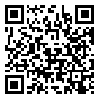BibTeX | RIS | EndNote | Medlars | ProCite | Reference Manager | RefWorks
Send citation to:
URL: http://ijhe.tums.ac.ir/article-1-5444-en.html
2- Department of Environmental Health, faculty of Medical Sciences, Tarbiat Modares University, Tehran, Iran ,
Background and objectives: Electrocoagulation (EC) as an electrochemical method was developed to overcome the drawbacks of conventional decolorization technologies and is an attractive alternative for the treatment of textile dyes. This study was aimed at the optimization of the EC process for decolorization and COD removal of a real textile wastewater using response surface methodology (RSM). RSM is an important branch of experimental design and a critical technology in developing new processes, optimizing their performance, and improving design and formulation of a new products. Materials and Methods: In this study, a bench scale EC reactor was designed, constructed, and studied for treatment of a textile wastewater. The main operational variables were current intensity, residence time, initial pH, and electrode materials as independent variables color and COD removal were considered as dependent variables. The experimental runs were designed using selected variables using Design Expert 7.0 software and the process was optimized for decolorization and COD removal using the response surface method. Results: The optimal operational conditions in the EC process for attaining the maximum decolorization and COD removal were current density of 0.97 A, initial pH of 4.04, residence time of 48 min, and Fe electrode. The desirability factor for Fe electrode was 1, while decolorization and COD removal were predicted 76.3 and 75.6% respectively, which was confirmed by the experimental results. Conclusion: The experimental results indicated that the EC process is an efficient and promising process for the decolorization and COD removal of textile effluents. Under the optimized conditions, the experimental values had a good correlation with the predicted ones, indicating suitability of the model and the success of the RSM in optimizing the conditions of EC process in treating the textile wastewater with maximum removals of color and COD under selected conditions of independent variables.
Received: 2015/04/19 | Accepted: 2015/04/19 | Published: 2015/04/19
| Rights and Permissions | |
 |
This work is licensed under a Creative Commons Attribution-NonCommercial 4.0 International License. |





